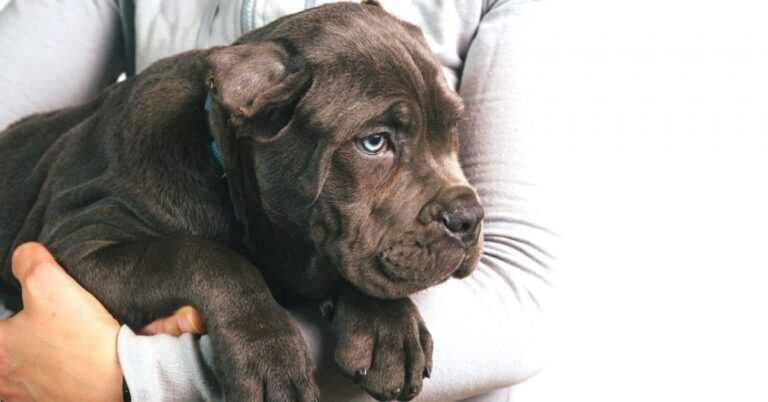Dog Tumors: The Complete Guide
Reviewed by Erica L. Tramuta-Drobnis, VMD, MPH, CPH
Dog tumors or canine cancer can be devastating for dog owners.
However, just like humans, cancer in dogs can be treated and cured if diagnosed early.
Cancer is the unrestrained and abnormal cell division. Cancer may happen when a single cell undergoes a series of genetic mutations, which causes unregulated cell division.
It’s normal to notice lumps or bumps on dogs at any age, especially older dogs. Many of these aren’t cancerous. However it’s important to diagnose any abnormalities as early as possible.
Signs of Dog Tumors

Dog tumors usually may show no signs at early stages. That’s why it’s important to contact your vet, if you notice any abnormal lump or skin abnormalities.
The most common signs of a dog tumor are:
- The presence of a lump or bump
- The skin over the bump is discolored or itchy
- Swelling
- Enlarged lymph nodes
- Lameness
- Swelling in the bone
- Wounds that won’t heal
- Unusual bleeding
Types of Dog Tumors

There are five common types of dog tumors:
Mast Cell Tumors
Mast cell tumors are one of the most common types of canine skin cancers. They are located in the connective tissues, especially vessels and nerves close to the external surface of the dog, like skin, lungs, nose, and mouth.
They grow fast, usually red and very itchy. These lumps contain histamine, which is responsible for itching. Dogs with this type of tumors are also at risk of having gastrointestinal ulcers.
This is because histamine tells the stomach to make more acids. Certain dog breeds are more prone to this type of tumor such as Boxers, Pugs, and French Bulldogs.
Usually, these breeds develop less aggressive tumors. However, the Chinese Shar-Peis can develop a very aggressive mast cell tumor.
Diagnosis of mast cell tumors is taking a cell sample to identify the tumor type. After that, a surgery is performed to remove the tumor.
The tumor is then sent to a pathologist for grading, to know how aggressive the tumor is, and how likely it is to spread to other parts of the body.
Melanoma
Melanoma is one of the most common skin tumors found in dogs. Many of the skin tumors are benign. However, melanoma affects the mouth, and can be very aggressive.
It’s believed that it’s caused by sun exposure. Many melanoma tumors have a black or dark brown color. In addition, the toe is usually swollen, and can be painful.
This type of tumor can spread to other parts of the body like lymph nodes, lungs, liver, or other organs.
Treatment of melanoma includes surgery, radiation therapy, and in some cases, an amputation of the toe may be needed, if the cancerous mass was there.
Lymphoma
Lymphoma is a type of tumor that affects lymph nodes, and causes swelling. This swelling is usually noticeable under the jaw, in front of the shoulders, and behind the knees.
Affected dogs suffer from lethargy, loss of appetite, and coughing. Diagnosis of lymphoma is performed by using a fine needle aspiration or tissue biopsy.
After that, the veterinary oncologist will do a staging test on the biopsy, to determine how aggressive the tumor is and where it could spread.
Chemotherapy is the most common treatment method of lymphoma.
Bone Cancer (Osteosarcoma)
Osteosarcoma is the most common bone tumor in dogs. It can affect any breed of dogs. However, it’s more common in the larger breeds like greyhounds, and great danes.
This tumor often affects the dog’s legs. Dogs who suffer from bone cancer are usually limping. Diagnosis includes doing an X-ray, to rule out arthritis.
A biopsy may be needed as well. Once the cancer is diagnosed, treatment includes amputation, and chemotherapy.
In case of amputation, only the affected area of the bone is removed, and a bone graft or a metal rod is placed.
Histiocytoma
This type of tumor is usually benign, and won’t spread to other parts of the body. This tumor usually develop through the immune systems.
They are also known as “button” tumors, because they are usually very small, less than an inch.
They appear red and hairless. It’s most common in young dogs of three years or younger.
In addition, it’s most common in certain breeds like English Bulldogs, Scottish Terriers, Greyhounds, Boxers, Boston Terriers, and Chinese Shar-Peis.
These tumors will usually regress on their own in a period of two to three months. However, removal may be recommended, if they are affecting the pet’s health and lifestyle.
Hemangiosarcoma
Hemangiosarcoma is a very deadly cancer of blood vessels that can spread quickly. It usually affects the dog’s spleen, heart, and skin.
In advanced stages, it may cause the spleen to rupture, which will affect the dog’s breathing, cause lethargy, and pale gums.
After diagnosis of the sample tissue, a surgery is performed to take out the spleen, and resolve the internal bleeding.
After that, chemotherapy is performed, because this type of cancer can spread quickly to other parts of the body.
Hemangiosarcoma is most common in larger breeds like German Shepherds and Golden Retrievers.
Papilloma
Papilloma are benign tumors or warts. This tumor looks like hard, pale, cauliflower-like warts on the dog’s skin.
They usually appear on the dog’s lips, inside the mouth, and around the eyes.
They can be painful and cause severe infections, which makes chewing and swallowing harder.
Papillomas usually go away after a few weeks, or months. However, if they are causing problems for the dog, they can be removed.
A virus called papillomavirus causes this type of tumor. An infected dog can transmit it, or by being in contact with contaminated objects like toys, and bedding.
Diagnosis of Dog Tumors

If you notice a lump on your dog, it’s best to visit your veterinarian to make sure it’s not cancerous.
The vet will do a physical exam, and a sample of the lump tissues will be taken and analyzed. These samples are collected using a fine needle aspirate or a biopsy.
These samples are then evaluated by a pathologist, to determine if the mass is cancerous and the type of cancer.
If a cancer is diagnosed, additional tests will be recommended like blood tests, X-rays, ultrasound, CT scan, MRI, and urinalysis.
When to See a Veterinarian

If you notice any unusual bumps or lumps on your dog, swelling, or limping, or any abnormalities, contact your veterinarian immediately, to help in early detection of tumors.
Early diagnosis of tumors may help in treating and curing cancer in dogs.







